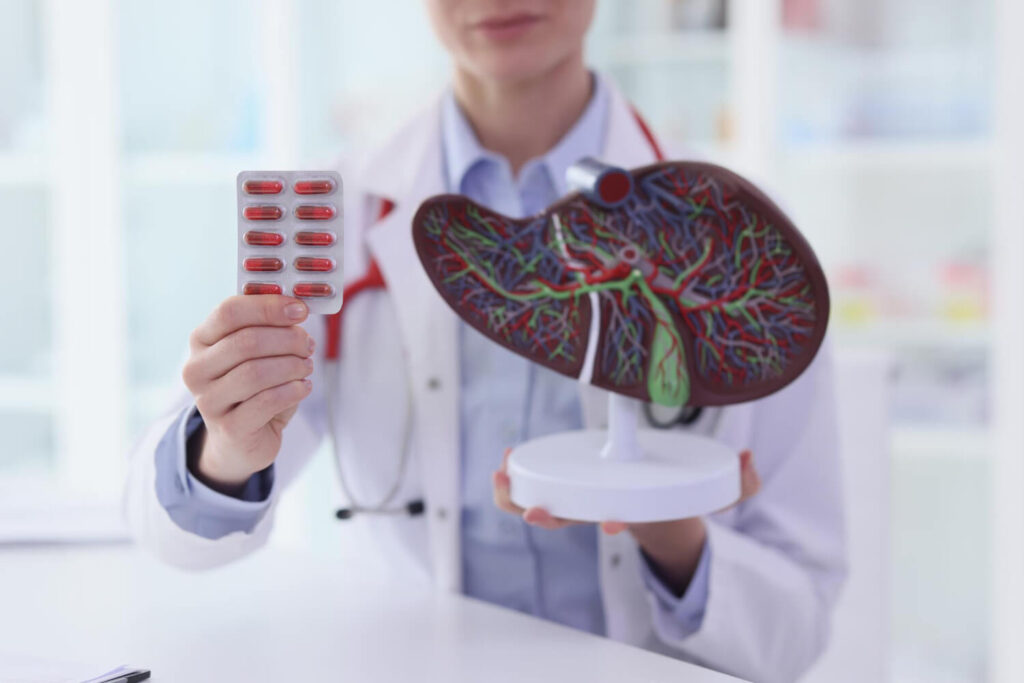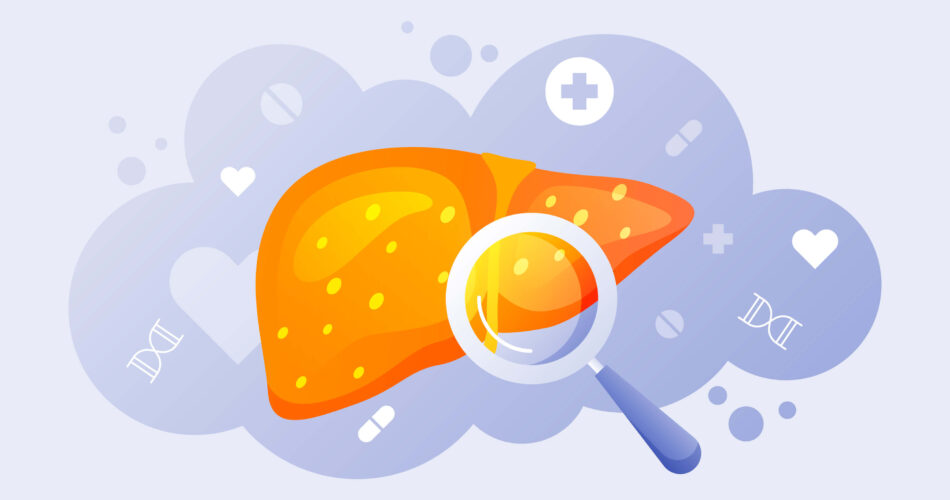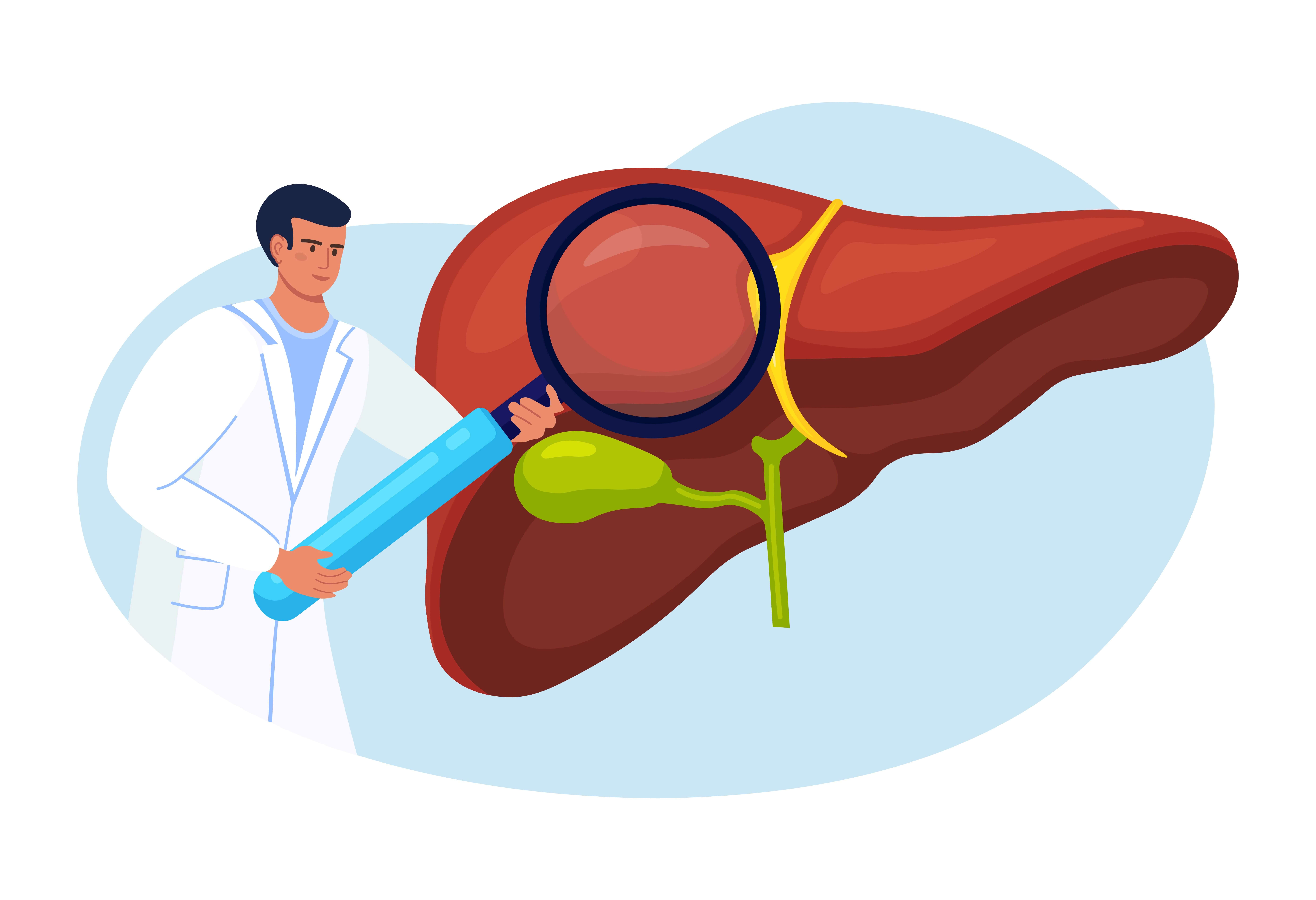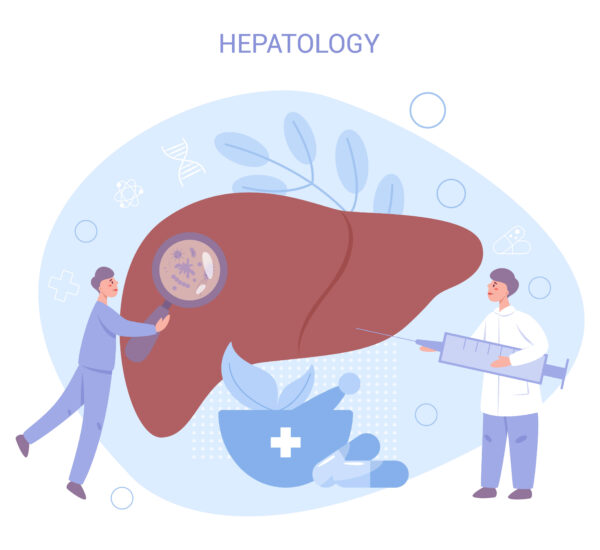Have you experienced sudden yet sharp pain in liver? That’s one of the most common symptoms that experts ask when diagnosing liver problems. The liver is a vital organ responsible for various functions, including detoxification, metabolism, and immune system support. When the liver is not functioning properly, it can lead to liver pain and other symptoms.
Understanding the causes and symptoms of liver pain is crucial for early detection and appropriate medical intervention. This blog will explore liver pain, its related discomfort, and when to seek medical attention.
So, if you have experienced such type of pain, this guide is for you. Let’s begin the discussion below!
Understanding Pain in Liver

Liver pain is typically felt in the upper part of the abdomen, on the right-hand side. It may also radiate to the back and right shoulder. The liver itself does not have pain receptors, and is located beneath the rib cage on the right side of the body. Thus, it contributes to the perception of pain in that area.
Common liver conditions that may cause pain include fatty liver disease, liver inflammation, liver abscess, and liver cancer. It is important to note that liver pain can vary in intensity and may range from a dull ache to a sharp, stabbing pain. It is advisable to seek medical attention if you experience persistent or severe liver pain, as it may indicate a serious underlying condition.
Differentiating Between Liver Pain and Other Abdominal Discomfort
The pain can sometimes be difficult to distinguish from other types of abdominal pain. Some patients might misidentify the region of the pain as abdominal discomfort. So understanding the condition better is vital for certain analysis and getting appropriate medical attention and treatment.
This type of pain is typically felt in the upper right abdomen, beneath the rib cage. It may radiate to the back and right shoulder. The pain may be accompanied by other symptoms such as jaundice, fatigue, and loss of appetite.
On the contrary, the other discomfort pain involves the following:
- general abdominal pain can be caused by various factors such as indigestion, gas, or muscle strain
- gallbladder pain is often triggered by the consumption of fatty or greasy foods and may be accompanied by symptoms such as nausea, vomiting, and bloating.
Chronic pain in liver may indicate an underlying liver condition, such as liver inflammation or liver disease. It is important to note that liver pain can vary in intensity and may be accompanied by other symptoms. If you experience persistent or severe abdominal pain, it is advisable to seek medical attention for a proper diagnosis and appropriate treatment.
Common Symptoms Associated with Pain in Liver

Liver pain can be accompanied by various symptoms that indicate an underlying liver condition or disease. These symptoms may include:
- Pain in the right shoulder: radiates to the right shoulder, causing discomfort and aching in that area.
- Severe pain: can range from a dull ache to a sharp, intense pain that may be constant or intermittent.
- Symptoms of liver disease: may be accompanied by other symptoms of liver disease, such as jaundice (yellowing of the skin and eyes), fatigue, loss of appetite, and weight loss.
Other signs that may indicate a need for immediate medical attention include:
- fever
- pale or bloody stools
- nausea and vomiting
- swelling in the abdomen or legs
It is important to note that not everyone with liver pain will experience all of these symptoms. The presence and severity of symptoms can vary depending on the underlying liver condition. If you are experiencing such type of pain along with any of these symptoms, it is advisable to seek medical attention for a proper diagnosis and treatment.
Common Liver Diseases and Their Impact
While factors like lifestyle choices and diet can be contributors to the pain in liver, underlying illnesses of the liver may also result in the same condition. Liver health is affected when there are conditions present.
Here are some of the known liver illnesses that can lead to pain in liver:
- Fatty liver disease: This condition occurs when fat accumulates in the liver, leading to inflammation and damage.
- Hepatitis B: A viral infection affects the liver and can lead to liver inflammation and long-term liver damage.
- Hepatitis C: Another viral infection that can cause liver inflammation and contribute to the development of liver disease.
- Liver cancer: Form of cancer that can develop from the abnormal growth of liver cells and can cause liver pain and other symptoms.
- Autoimmune hepatitis: This condition occurs when the immune system mistakenly attacks healthy liver cells, leading to inflammation and liver damage.
These liver diseases can vary in severity and require appropriate medical attention and treatment. It is important to work with a healthcare professional to manage these conditions and prevent further complications.
When to Be Concerned About Liver Pain
If pain in liver occurs, it should be acknowledged as it can indicate an underlying liver condition that requires medical attention. Persistent or severe pain in liver can be caused by factors and intervention of doctors can help patients to achieve recovery. That’s why it is important to seek immediate medical attention.

Moreover, pain in liver can also be alarming when red flags or symptoms are present. Certain symptoms associated with liver pain may indicate a need for immediate medical attention. These include:
- Severe pain: If you experience severe, intense pain in the liver area, it is important to seek medical attention.
- Liver failure: Symptoms of liver failure, such as jaundice, confusion, and bleeding, require immediate medical intervention.
- Hepatic encephalopathy: This condition occurs when the liver is unable to remove toxins from the blood, leading to mental confusion, disorientation, and other neurological symptoms.
If you experience any of these red flags, it is crucial to seek immediate medical attention to prevent further complications and receive appropriate treatment.
Diagnostic Approaches for Liver Pain
To diagnose the cause of liver pain, healthcare providers may use various diagnostic approaches. These diagnostic approaches help identify the underlying cause of liver pain and guide appropriate treatment. At the same time, it can help individuals to understand their condition further as the doctor will conduct a thorough assessment.
If you suspect that there’s a possible alarming reason behind liver pain, it’s best to rely on the following approaches.
Initial Evaluation and History Taking
During the initial evaluation, healthcare providers will conduct a physical examination to assess liver health. They will also ask about medical conditions, previous liver issues, and any potential risk factors for liver disease.
The information gathered during the history taking process helps healthcare providers understand the patient’s overall health and identify potential underlying causes of liver pain. This information is crucial for guiding further diagnostic testing and developing an appropriate treatment plan.
Imaging and Blood Tests Used in Diagnosis
Meanwhile, another aspect that the doctor will introduce is the imaging and blood tests. These procedures are commonly used to diagnose liver pain and identify the underlying cause.
Imaging tests such as ultrasounds, CT scans, and MRIs can provide detailed images of the liver, helping to identify any abnormalities or areas of concern. Blood tests can assess liver function and detect specific liver problems, such as viral infections or liver damage. In some cases, a liver biopsy may be performed to obtain a tissue sample for further analysis.
These diagnostic approaches help healthcare providers accurately diagnose the cause of liver pain and develop an appropriate treatment plan.
Pain in Liver Treatment Options
Finding the suitable treatment for your pain in liver condition depends on the underlying cause and severity of the condition. It may involve a combination of medical treatments, lifestyle changes, and interventions. Additionally, doctors will possibly prescribe medications to help manage the symptoms effectively.

However for severe cases, treatment options like liver dialysis or liver transplant may be necessary. It is important to work closely with a healthcare provider to determine the most appropriate treatment options for liver-related pain. For a more comprehensive discussion about these treatments, follow the discussion below!
Managing Symptoms Through Lifestyle Changes
Lifestyle changes can play a significant role in managing liver-related pain and promoting overall liver health. Making healthy lifestyle choices can help reduce inflammation, support liver function, and prevent further liver damage. These lifestyle changes may include:
- Maintaining a balanced diet: Consuming a diet rich in fruits, whole grains, and lean proteins can support liver health.
- Reducing alcohol consumption: Limiting or avoiding alcohol can help reduce liver inflammation and damage.
- Maintaining a healthy weight: Managing weight through regular exercise and a balanced diet can reduce strain on the liver.
- Avoiding harmful substances: Minimizing exposure to toxins and avoiding the use of illicit drugs can help protect liver health.
By incorporating these lifestyle changes, individuals can support liver health, manage symptoms, and improve overall well-being.
Medical Treatments and Interventions
In terms of medical treatments and interventions, healthcare providers may prescribe medication to manage pain, reduce inflammation, or treat infections. In severe cases of liver failure, liver dialysis or liver transplant may be considered.
These interventions can help support liver function and improve symptoms. It is important to work closely with a healthcare provider to determine the most appropriate medical treatments and interventions for liver-related pain and conditions.
The Role of Surgery in Treating Liver Conditions
As mentioned, severe cases will possibly lead to surgery like liver transplant. Take note that this option will only be selected once every method for cure and management are exhausted. That means, the liver is not functional, which can result in detrimental effects to the body and overall well being. Thus, transplantation of a healthy liver must happen.
Meanwhile, surgery in the liver may also happen to remove the tumors found during a biopsy or imaging procedures. That way the cancer tumors will not spread. It is vital for patients to communicate with a doctor to fully understand this treatment method. The decision to undergo liver surgery depends on various factors, and it is important to discuss the potential benefits and risks with a healthcare provider.
Conclusion
There are several contributing factors that can lead to pain in liver. That’s why it is important to not self-diagnose and visit a doctor immediately once the pain has started. Doing so will help patients to address the condition, find out the root cause of the pain, and identify the suitable form of treatment.
Remember, the liver has a role in one’s body system, and once it fails, it can bring other alarming health conditions. Thus, the importance of early intervention.Be proactive about your liver health. Book an online consultation or visit a local health center to meet with a hepatologist today!


